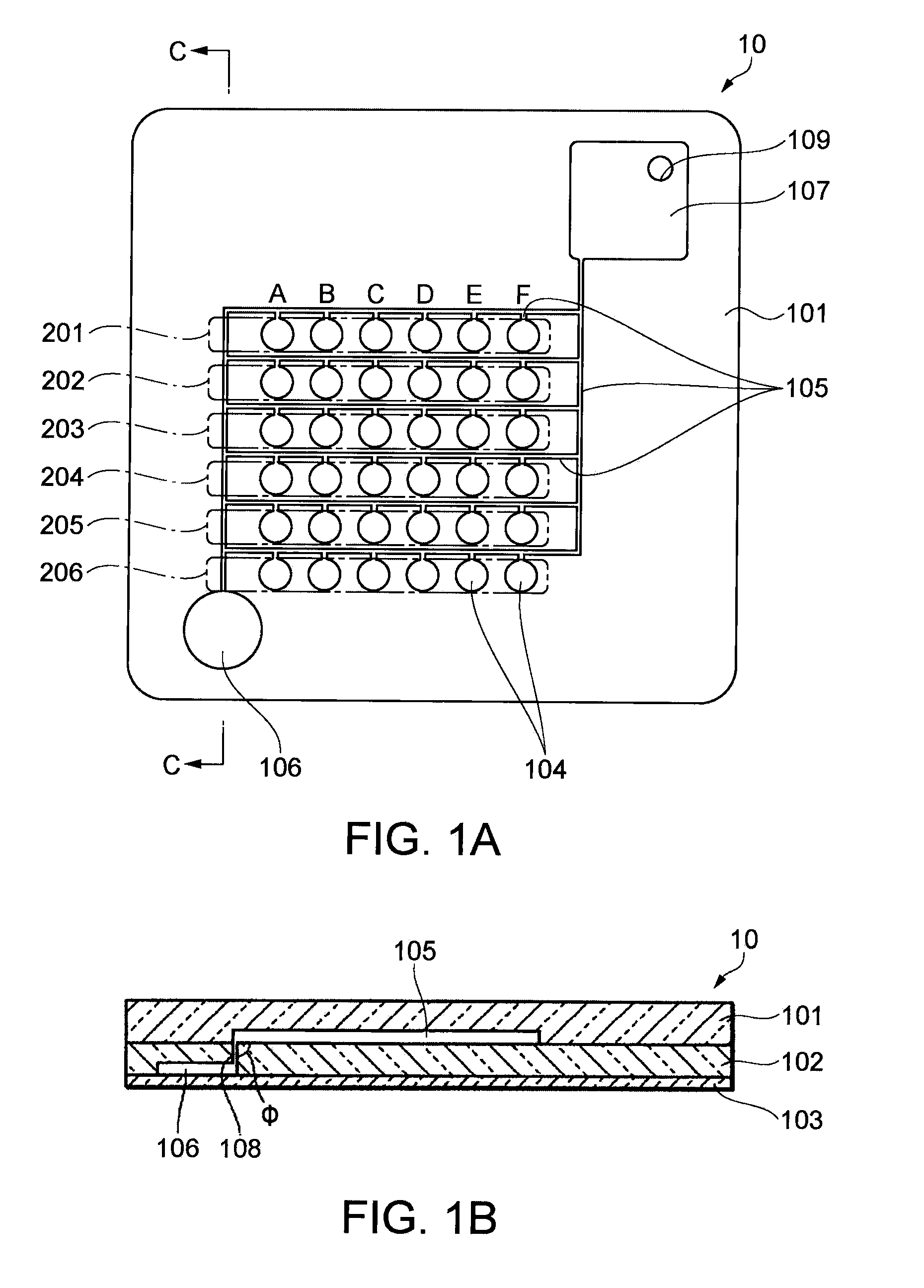Biochip and target DNA quantitative method
a technology applied in the field of biochips and target dna quantitative methods, can solve the problems of low reliability, difficult simultaneous measurement of large number of reaction systems, and high cost of pcr reagents, and achieves low cost, wide quantifiable range of target dna, and easy pcr amplification
- Summary
- Abstract
- Description
- Claims
- Application Information
AI Technical Summary
Benefits of technology
Problems solved by technology
Method used
Image
Examples
embodiment
1. Embodiment
1.1. Biochip
[0030]FIG. 1A is a plan view schematically illustrating a configuration of a microchamber array (biochip) 10 according to an embodiment of the invention. FIG. 1B is a cross sectional view at C-C of FIG. 1A.
[0031]The microchamber array 10 is a biochip (biological sample quantification chip) used to quantify the target DNA contained in a sample. As illustrated in FIG. 1A and FIG. 1B, the microchamber array 10 includes groups of chambers 201, 202, 203, 204, 205, and 206 that contain a plurality of chambers 104. The microchamber array 10 also includes first paths 105 connected to each chamber 104. A reservoir 107 and a waste storage 106 connected to the first paths 105 are also provided. The waste storage 106 is connected to the reservoir 107 via the first paths 105. The microchamber array 10 further includes second paths 108 that connect the first paths 105 to the waste storage 106, and a inlet 109 through which a reaction liquid is externally supplied into the...
PUM
| Property | Measurement | Unit |
|---|---|---|
| temperatures | aaaaa | aaaaa |
| temperatures | aaaaa | aaaaa |
| temperatures | aaaaa | aaaaa |
Abstract
Description
Claims
Application Information
 Login to View More
Login to View More - R&D
- Intellectual Property
- Life Sciences
- Materials
- Tech Scout
- Unparalleled Data Quality
- Higher Quality Content
- 60% Fewer Hallucinations
Browse by: Latest US Patents, China's latest patents, Technical Efficacy Thesaurus, Application Domain, Technology Topic, Popular Technical Reports.
© 2025 PatSnap. All rights reserved.Legal|Privacy policy|Modern Slavery Act Transparency Statement|Sitemap|About US| Contact US: help@patsnap.com



